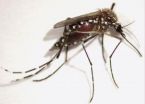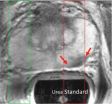(Press-News.org) WASHINGTON – Moderate consumption of so-called energy drinks can improve people's response time on a lab test measuring behavioral control, but those benefits disappear as people drink more of the beverage, according to a study published by the American Psychological Association.
With the growing popularity of energy drinks such as Red Bull, Monster, Burn and RockStar, especially among high school and college students, psychologists have been studying the effects of sugary, highly caffeinated drinks on young people. College students in particular have been using these drinks to stay awake, help them study and cut the intoxicating effects of alcohol. The latter use has sent several young people to hospital emergency rooms, leading a handful of state liquor control boards recently to ban the drink Four Loko, which combined caffeine and alcohol.
"Several aspects of cognitive performance that show improvement under the influence of caffeine are attention, reaction time, visual search, psychomotor speed, memory, vigilance and verbal reasoning," said Cecile A. Marczinski, PhD, of Northern Kentucky University and co-author of the study "Acute Effects of a Glucose Energy Drink on Behavioral Control." "The results of the current study illustrate that energy drinks can increase stimulation and decrease mental fatigue, suggesting that they may be used with alcohol to counteract the sedation associated with drinking."
The study, published in the December issue of the APA journal Experimental and Clinical Psychopharmacology, included 80 college students (34 men and 46 women) between the ages of 18 and 40. Some were given Red Bull 7, while others were given lower amounts of caffeine added to Squirt, a lemon-flavored decaffeinated soda that looks and tastes like Red Bull. Others were given plain Squirt as a placebo. A half-hour after finishing the drinks, participants took a computerized "go/no-go" test in which they had to respond quickly to targets on a screen. They were instructed to hit the forward slash key when a green target appeared and do nothing when a blue target appeared.
Participants were also asked how stimulated and mentally fatigued they felt after the drinks. The students who were given Red Bull reported feeling more stimulated and less tired than the other participants, but their response rates were slower.
"This finding is of interest given that energy drinks are frequently mixed with alcohol and the acute effects of alcohol impair response inhibition," Marczinski said. "Since regulation of energy drinks is lax in the United States in regard to content labeling and possible health warnings, especially mixed with alcohol, having a better understanding of the acute subjective and objective effects of these beverages is warranted."
In a second study reported in the same journal, Jennifer L. Temple, PhD, and colleagues at the University at Buffalo found boys and girls respond differently physiologically to caffeine. In this experiment, 26 boys and 26 girls between the ages of 12 and 17 drank flattened Sprite containing caffeine at three concentrations: 50 mg, 100 mg or 200 mg. Flat Sprite with no caffeine was included as a placebo. The youngsters were then tested for changes in their blood pressure and heart rate every 10 minutes for one hour. At the end of the hour, they were given a questionnaire and an opportunity to eat all they wanted of the following junk food: Skittles and Smarties (high sugar/low fat); potato chips and Doritos (low sugar/high fat); and M&Ms and Twix (high sugar/high fat).
Among boys, high caffeine consumers showed greater increases in their diastolic blood pressure (the lower number) than boys who ingested less caffeine. There was no relationship between blood pressure and caffeine consumption in girls. In addition, those participants who ingested the most caffeine ate more high-sugar snack foods in the laboratory compared to low-caffeine consumers.
Boys and girls also had different reasons for consuming caffeine, the researchers found. Boys were more likely than girls to say they consumed caffeine "to get energy," "to get a rush" and for "athletic performance."
"Adolescents are among the fastest growing consumers of caffeine and yet very few empirical studies have focused on this population," Temple said. "It is imperative that we understand the impact of caffeine use on adolescents."
###
Articles: "Acute Effects of a Glucose Energy Drink on Behavioral Control," Meagan A. Howard and Cecile A. Marczinski, PhD, Northern Kentucky University. Experimental and Clinical Psychopharmacology, Vol. 18, No. 6.
"Effects of Acute Caffeine Administration on Adolescents," Jennifer L. Temple, PhD, Amber M. Dewey, BS, and Laura N. Briatico, BS, University at Buffalo. Experimental and Clinical Psychopharmacology, Vol. 18, No. 6.
Full text of the articles available from the APA Public Affairs Office. Contact public.affairs@apa.org or 202-336-5700.
Contact Dr. Cecile A. Marczinski by e-mail at marczinskc1@nku.edu or by phone at 859-572-1438.
Contact Dr. Jennifer L. Temple by e-mail at jltemple@buffalo.edu or by phone at 716-829-5593.
The American Psychological Association, in Washington, D.C., is the largest scientific and professional organization representing psychology in the United States and is the world's largest association of psychologists. APA's membership includes more than 150,000 researchers, educators, clinicians, consultants and students. Through its divisions in 54 subfields of psychology and affiliations with 60 state, territorial and Canadian provincial associations, APA works to advance psychology as a science, as a profession and as a means of promoting health, education and human welfare.
END
BEER-SHEVA, ISRAEL, December 2, 2010 -- Intense, individually tailored dietary treatment for acutely hospitalized elderly has a significant impact on mortality, according to a new study by researchers at Ben-Gurion University of the Negev.
The intervention study just published in the prestigious Journal of the American Geriatric Society showed higher death rates six months after discharge (11.6 percent) of the control group compared to the intervention group's death rate of 3.8 percent, which received intensive nutritional treatment designed and implemented by a registered ...
Rice University researchers have discovered a simple way to make carbon nanotubes shine brighter.
The Rice lab of researcher Bruce Weisman, a pioneer in nanotube spectroscopy, found that adding tiny amounts of ozone to batches of single-walled carbon nanotubes and exposing them to light decorates all the nanotubes with oxygen atoms and systematically changes their near-infrared fluorescence.
Chemical reactions on nanotube surfaces generally kill their limited natural fluorescence, Weisman said. But the new process actually enhances the intensity and shifts the wavelength. ...
LIVERMORE, Calif. - Arsenic - an element that triggers death for most Earthly life forms - is actually allowing for a bacterium to thrive and reproduce.
In a study that may prompt the rewriting of textbooks, a team of astrobiologists and chemists has found the first known living organism that can use arsenic in place of phosphorus in its major macromolecules. The new findings, published in the Dec. 2 Science Express, could redefine origins of life research and alter the way we describe life as we know it.
Oxygen, carbon, hydrogen, nitrogen, sulfur and phosphorous ...
RIVERSIDE, Calif. – Each year, dengue fever infects as many as 100 million people while yellow fever is responsible for about 30,000 deaths worldwide. Both diseases are spread by infected female Aedes aegypti mosquitoes, which require vertebrate blood to produce eggs. The blood feeding and the egg development are tightly linked to how the mosquito transmits the disease-causing virus.
Now a team of entomologists at the University of California, Riverside has identified a microRNA (a short ribonucleic acid molecule) in female Aedes aegypti mosquitoes that when deactivated ...
Raw milk is consumed by an estimated 1-3 percent of the United States population. Raw milk and raw cheeses are responsible for almost 70 percent of reported dairy outbreaks. On July 16, 2008, the Connecticut Department of Public Health identified two unrelated children who had experienced hemolytic uremic syndrome after consuming raw milk from the same farm. The authors investigated the situation further and found more cases of people affected by raw milk from the same farm. The details of their study are chronicled in the Dec. 15 issue of Clinical Infectious Diseases, ...
A fast test to diagnose fatal brain conditions such as mad cow disease in cattle and Creutzfeldt-Jakob disease in humans could be on the horizon, according to a new study from National Institutes of Health scientists. Researchers at NIH's National Institute of Allergy and Infectious Diseases (NIAID) have developed a highly sensitive and rapid new method to detect and measure infectious agents called prions that cause these diseases.
"Although relatively rare in humans and other animals, prion diseases are devastating to those infected and can have huge economic impacts," ...
The research was led by Dr. Matthew Ellinwood, a veterinarian and animal science professor at Iowa State University, in collaboration with Dr. Patricia Dickson at the Harbor-UCLA Medical Center, with colleagues at the Iowa State College of Veterinary Medicine, the University of Tennessee, St. Louis University and the University of Pennsylvania. Their work was published in the AAAS journal Science Translational Medicine.
The research focused on a disorder called mucopolysaccharidosis type I, or MPS I, which is caused by the lack of a key enzyme that breaks down substances ...
November 30, 2010 -- Despite the existence of effective programs for treating alcohol dependencies and disorders, less than a quarter of people who are diagnosed actually seek treatment. In a recent study by Columbia University's Mailman School of Public Health researchers report that people diagnosed with alcoholism at some point in their lifetime were more than 60% less likely to seek treatment if they believed they would be stigmatized once their status is known.
This is the first study to address the underuse of alcohol services specifically with regard to alcohol-related ...
###
Gold, L., et al. (2010). “Aptamer-based multiplexed proteomic technology for biomarker discovery,” PLoS One. Available online at http://dx.plos.org/10.1371/journal.pone.0015004
Ostroff, R. et al. (2010). “Unlocking biomarker discovery: Large scale application of aptamer proteomic technology for early detection of lung cancer.” PLoS One. Available online at http://dx.plos.org/10.1371/journal.pone.0015003
About SomaLogic, Inc.
SomaLogic, Inc., is a privately held biomarker discovery and clinical proteomics company based in Boulder, Colorado. The company's mission ...
A UCSF research collaboration with GE Healthcare has produced the first results in humans of a new technology that promises to rapidly assess the presence and aggressiveness of prostate tumors in real time, by imaging the tumor's metabolism.
This is the first time researchers have used this technology to conduct real-time metabolic imaging in human patients and represents a revolutionary approach to assessing the precise outlines of a tumor, its response to treatment and how quickly it is growing.
Data on the first four patients are being presented today at the Radiology ...

